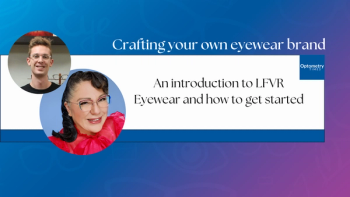
Measure visual, not pupillary, axis for accurate progressive addition lenses placement, OD says
The most frustrating part of fitting glasses is fitting progressive addition lenses and the resulting problem with lens wearer rejections, non-adaptation, and high re-do rates caused by ill-fitting PALs.
Key Points
It seems that no matter how accurate the pupillary distance (PD) measurements taken with a corneal reflection pupilometer (CRP), a significant number of PAL wearers report feeling uncomfortable with their new lenses.
PAL wearers have made complaints, such as "not being able to find an area that had good vision" or being "able to see with only one eye at a time." These and other disparaging remarks stem from wearers' frustration with never being visually comfortable with the PAL-style bifocal.
Lens manufacturers have wrongly assumed that one of the major problems with PAL fitting was having segment placement errors produced by using inaccurate PD measurements, causing the lens wearer's rejection of this type of lens.
The PD measurement has been used since the beginning of the optical industry as a guide to placement of ophthalmic lenses in a frame, giving each lens wearer a customized pair of lenses. Today, however, the PD measurement has little value where accurate placement of a PAL is essential for success.
The right tool for the job
The need for a more accurate PD measurement was addressed by developing the corneal reflection pupillometer (CRP). This device, still widely used today, measures the distance between two pinpoints of light reflected off the corneas, determining the distance between the lens wearer's two pupillary axes.
The CRP produces a very accurate and repeatable measurement of the spacing of the pupillary axes of a lens wearer's eyes. This is the most common measurement used to place a progressive add lens in an individual's frame. The end result of using this CRP measurement is that the progressive lens segments end up centered on the lens wearer's pupillary axes.
The fundamental flaw in this process is that the PAL segment needs to be centered on the visual axis, not the pupillary axis, to achieve a successful fit with this style of lens with narrow segments.
Newsletter
Want more insights like this? Subscribe to Optometry Times and get clinical pearls and practice tips delivered straight to your inbox.


















































.png)


